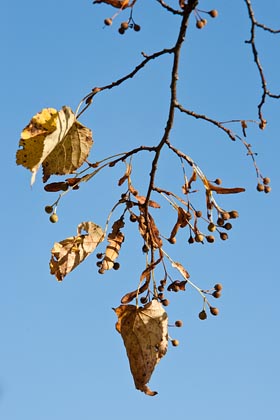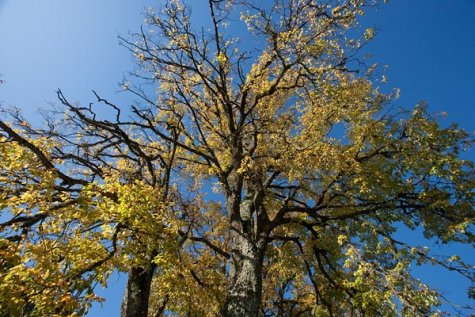Lime fruits visible
Photos: Arne Ader
Translation: Liis
Lime
Common lime; small-leaved lime Harilik pärn, lõhmus ehk niinepuu Tilia cordata
The lime has been a holy tree to our ancestors, as to other peoples around the Baltic, and the Germanic peoples. The shade-tolerant trees often grow as small and unnoticed plants in the under-canopy layer of the forest. The lime fruits were brought there by rodents or birds filling their winter stores.
In July, during the flowering period, lime flowers were collected and dried for winter use, for making teas against colds, and they were a source of nectar for bees. Now we can see pea-sized ripe nutlets among the sparser leaves. Autumn storm winds rip most of the fruits off the trees; aided by the ”fruit wings” of limes they are carried further away from the mother tree to give the seeds a chance to grow into trees.
Germination is slow for limes. Sowing studies have shown that in the following spring almost no seeds germinate; not until one year later about half germinate and begin to grow, and in nature this part is of course extremely small. Limes grow readily from stump shoots and we can quite often come across trees with multiple trunks.
Lime trees
Lime trees that have started growing are very long-lived and beautiful trees. In city parks predominantly Imported foreign species are grown; they tolerate air pollution and chlorides better and are more resistant to many of the diseases of limes. They start flowering a little earlier than the small-leaved lime.










